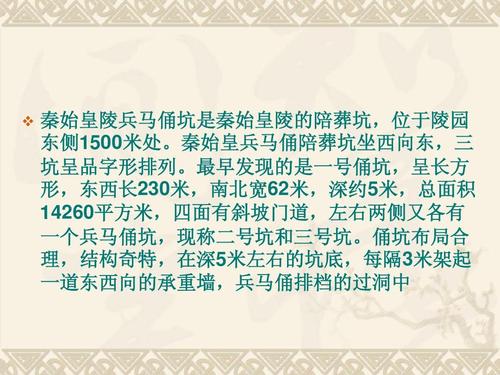
How Long Did It Take to Build the Terracotta Army?
A Monumental Task
The Terracotta Army, discovered in 1974 near Xi'an, China, is one of the most impressive archaeological finds in history. This massive collection of life-size terracotta sculptures depicts the armies of Qin Shi Huang, the first emperor of China.
The creation of this army was a monumental task, involving hundreds of thousands of laborers and spanning several decades. Let's delve into the details of this incredible feat of engineering and artistry.
40 Years of Labor
It is estimated that it took approximately 40 years to complete the construction of the Terracotta Army. Work began around 246 BC, shortly after Emperor Qin Shi Huang ascended the throne at the age of 13. The project continued until his death in 210 BC.
This lengthy construction period highlights the sheer scale of the project. Over 700,000 laborers, including artisans, craftsmen, laborers, and convicts, were conscripted to work on the mausoleum complex, which included the Terracotta Army pits.
A Complex Construction Process
The construction of each terracotta warrior was a multi-stage process, requiring great skill and precision:
-
Making the Clay: The clay used to create the warriors came from the Wei River valley near the mausoleum. It was mixed with sand and other materials to create a durable material that could withstand the test of time.
-
Molding the Body Parts: The warriors were not made as single, solid figures. Instead, they were created using a modular system. Body parts like legs, torsos, arms, and heads were made separately in molds and then assembled.
-
Unique Details: Once assembled, each figure was meticulously detailed by hand. This included adding facial features, hairstyles, armor, and weaponry. This individualization is what makes each warrior unique.
-
Firing the Figures: After detailing, the warriors were fired in kilns at temperatures reaching up to 1,000 degrees Celsius (1,832 degrees Fahrenheit). This firing process hardened the clay, ensuring the figures' longevity.
A Legacy Unearthed
The Terracotta Army remained hidden underground for over 2,000 years. It was only in 1974, when local farmers digging a well stumbled upon the first figures, that the magnitude of this buried treasure was revealed.
The discovery astonished the world and provided invaluable insights into the military practices, artistry, and culture of the Qin dynasty. Today, the Terracotta Army is a UNESCO World Heritage Site and a testament to the ambition and artistry of ancient China.
FAQs
How many Terracotta Warriors are there?
While over 8,000 life-size figures have been unearthed so far, it’s believed that the three main pits containing the Terracotta Army hold many more warriors and horses yet to be excavated.
Why was the Terracotta Army built?
The Terracotta Army was part of a much larger mausoleum complex built for Emperor Qin Shi Huang. It's believed that the army was placed there to protect him in the afterlife and to accompany him in his quest for immortality.
Are the Terracotta Warriors hollow?
Yes, the Terracotta Warriors are hollow. This was a deliberate construction technique. It not only saved on materials but also helped to prevent cracking during the firing process.